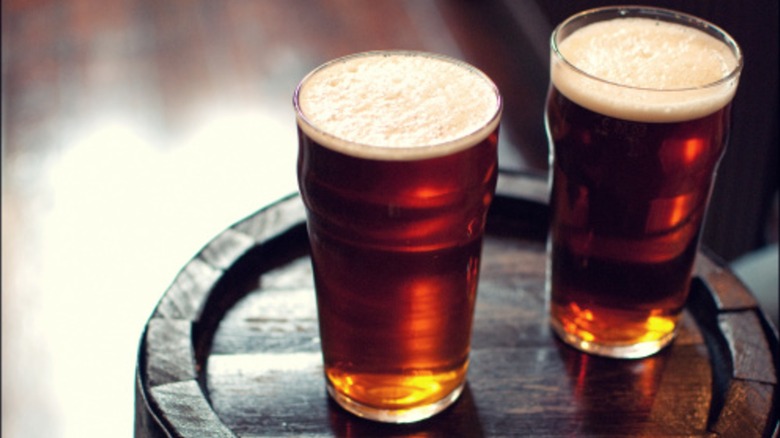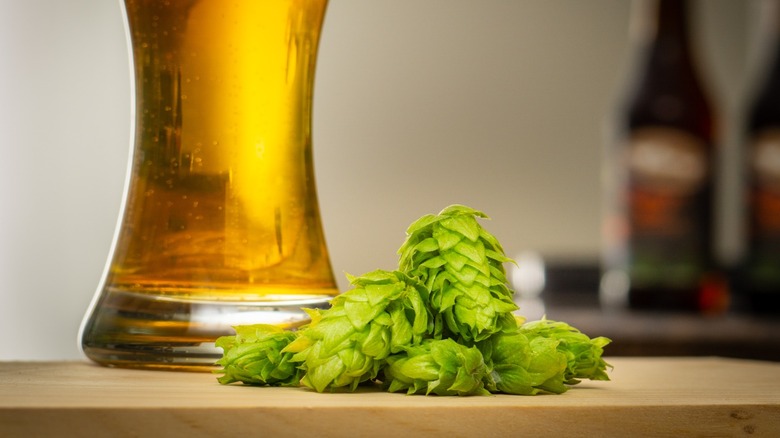What's The Difference Between British And American Pale Ales?
Pale ales have taken somewhat of a grip on beer culture over the past few years, especially when it comes to craft brewing. There's little doubt that you've come to know the concept of the hoppy, ultra-bitter craft IPAs that seem to permeate the beer scene. But to think that this stereotype encapsulates all of the pale ale market would be selling this type of beer short. While it can be somewhat easy to distinguish the difference between IPAs and other pale ales by virtue of the bitter hoppy component, the differentiations don't end there.
Besides India — the "I" in IPA — there are two other regionally named members of the pale ale family: British and American. While neither is as hop-forward as the typical IPA, they both still have a hoppiness present, alongside a malty flavor. However, while British pale ales (otherwise known as bitter beers) tend to specialize in deep malty flavor, American pale ales sacrifice some maltiness for more hops in its flavor profile, often taking advantage of the more citrusy Cascade hops created in the United States.
American pale ales represent an evolution in brewing
When looking at the difference between American and British pale ales, the taste profile isn't the only thing to delve into. Just like the IPA's origin story, American pale ale can trace its lineage back to its British ancestor. But, over time, the practices and ingredients changed to match the situation and sensibilities of the new-world artisans and consumers. When it comes to American and British pale ales, these differences can be seen not only in the type of hops used, but also in their brewing practices.
For a British pale ale, like with most ales, top-fermenting ale yeast is critical to fermentation, giving the brew a subtle fruity note. Besides the traditional brewing method, nothing is usually added to give the beer more punch than it has. American pale ales started out just like this, mimicking the practices of the British brewers. But, over the years, a few things changed. Aside from brewing to a higher alcohol percentage on average, dry-hopping – adding extra hops during or after fermentation for a hoppier flavor — is also not uncommon in American pale ales. In both taste as well as method, British and American pale ales have carved their own respective niches.

